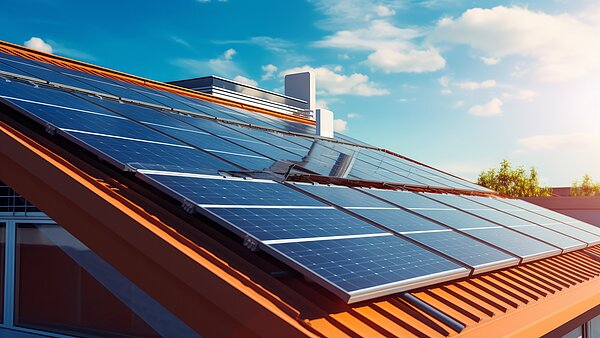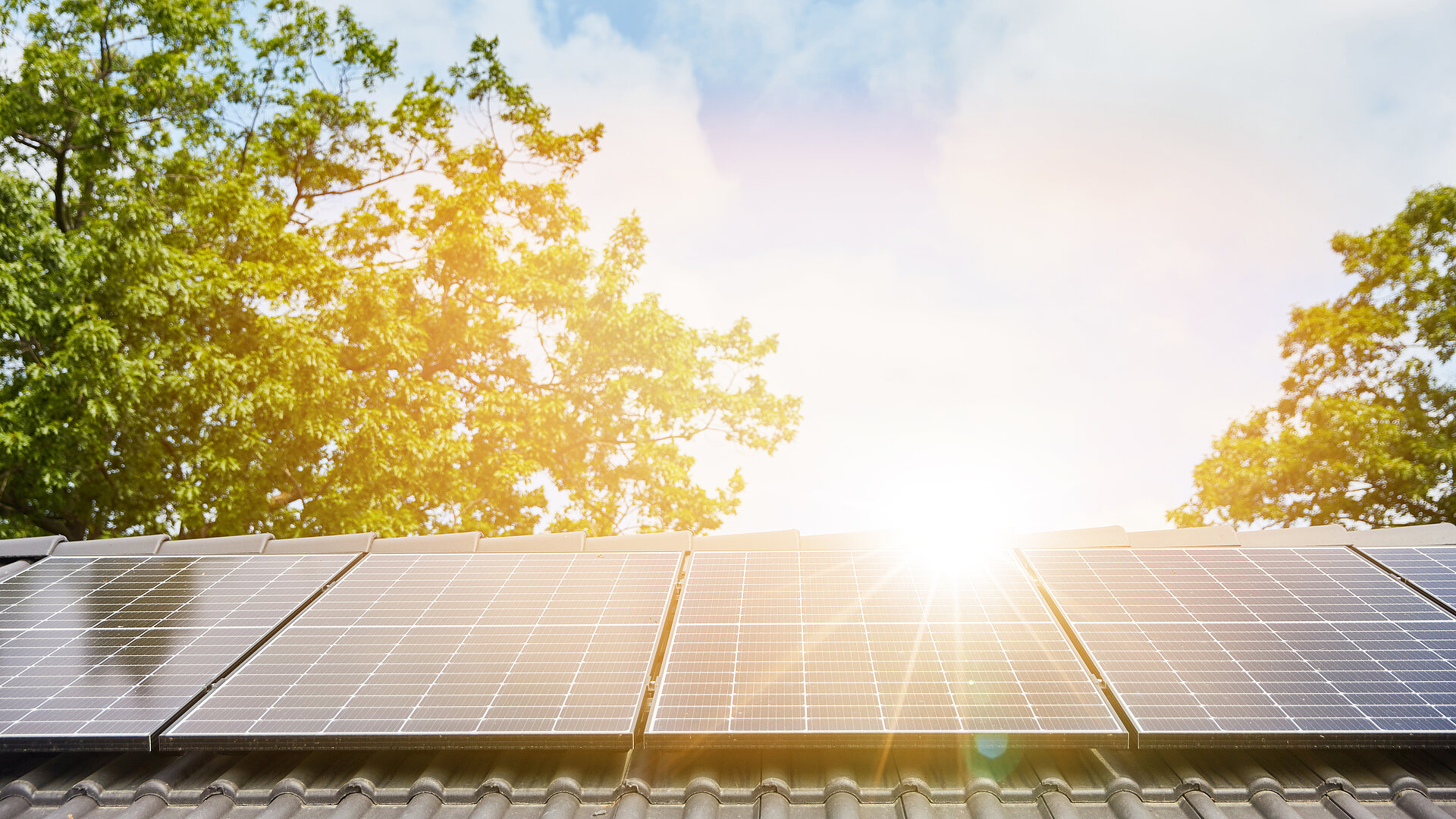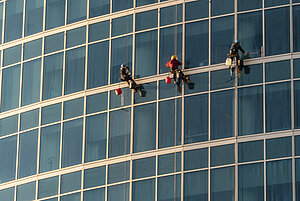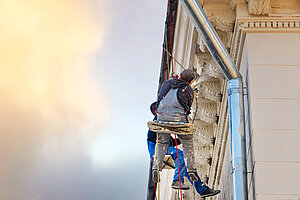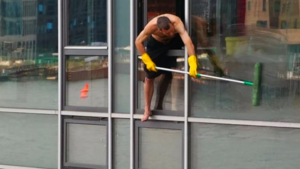The installer or solar technician as a full-service provider?
Experience has clearly shown: Installers and solar technicians who collaborate with a professional partner for fall protection systems and who are thus able to serve your PV customers as a one-stop shop are held in exceptionally high regard in the industry. This is because the installation of a PV system turns the roof into a dangerous workplace – which, by law, must be safeguarded to the greatest extent possible. The key aspect is to ensure that your safety system is legally compliant and, more importantly, certified and tested – only then can you be sure that it is really safe! We cooperate with countless installers and solar technicians to put you in a position to install a PV system on your customers’ roofs that is 100% safe. This is of tremendous benefit to everyone involved. To the PV customer, this cooperation translates into a substantial savings of time as it eliminates the need for any additional research on all aspects that are relevant to the safety of the PV system.
As an added benefit, it also gives them the assurance that the solar power plant installed on their roofs will always operate at peak performance, as maintenance and cleaning can be carried out safely at all times, ensuring that the panels will always be free of dirt or snow. Our diversity of products offers the perfect safety solution for nearly every single use. Better yet, our fall protections systems always reflect the state of the art, ensuring that they always fully comply with all applicable standards.
Putting the collaboration into practice
After a detailed analysis of the respective conditions, the optimally suitable fall protection system is defined for the planned or already existing PV systems. The installation of the safety system is carried out by a certified partner company. Of course, the safety solutions can also be installed by the customer after completing the INNOTECH training. The documentation is done via the digital tool INNO|doc.
The essentials to observe when creating a comprehensive safety concept …
Devising a detailed safety concept for your PV system installed on the roof is indispensable. Consulting the expertise of experts is all-important in this regard as the roof is one of the most dangerous workplaces of all. You as the party ordering maintenance and cleaning work are responsible for ensuring the safety of all staff involved.
Details about the safety concept for your PV system
There is a large number of aspects that need to be factored in during the planning of your PV system on the roof and the matching professional fall protection system.
Here are the most important of them at a glance:
- The fall protection system needs to be based on the latest technologies and standards and ensure that certain types of liability be excluded.
- Another key factor is to account for the specific conditions at the installation location
- The pitch and height of the roof
- The condition of the building itself
- potential obstacles such as chimneys, skylights or air conditioners and/or any EAPs that may already be present on the roof
- the geographical location of the building – area with great or small amounts of snowfall …
- Complete documentation as well as annual inspections of the entire installation including fall protection system must be considered from the very beginning.
- How do you use your own equipment to rescue accident victims in an emergency?
It is vital to begin the project with the preparation of a sound risk assessment, which will then serve as the basis for devising the perfect fall protection system. The basis distinction made in this context is between individual and collective protection solutions.
Principles for planning fall protection systems
Aside from selecting the proper anchorage equipment, the positioning of the anchorage equipment is of vital importance to the planning of the fall protection system for your PV system installed on the roof. After all, it will be necessary to safely step onto all areas of the roof / PV system. This starts, of course, with risk-free access to the photovoltaic system. Particular challenges such as darkness, weather, snow, wetness, ice or wind must be taken into account. Another vital aspect is that the entire substructure be of sufficient load-bearing capacity – this may require that you consult a structural engineer.
Attention: Accessing the roof ranks among the most dangerous moments the staff working on the PV system can experience as they generally carry their tools or cleaning materials with them.
You will find further details about the general planning principles here:
Safety solutions for flat and pitched roofs
There is a basic difference between flat and pitched roofs. Although they differ in shape, both roof types pose specific challenges during installation and/or cleaning and servicing tasks on PV systems. Areas of particular danger on flat roofs are the edge of the roof as well as skylights. The steep inclination of some pitched roofs alone puts the staff involved at a major risk of falling; a brief moment of carelessness is often enough to cause a fall.
The challenge in general is:
- The route onto the roof or to the photovoltaic system: In many cases there are no permanently anchored and secured access points. This means that simple ladders or roof hatches and/or roof windows are often used for the ascent to the “PV system” workplace. These need to be secured accordingly – no matter if they are found on a flat or pitched roof. It is important that the first anchorage device be placed in immediate proximity to the ascent aid / roof hatch or the roof window and in a location where it is easily accessible for the respective worker.
- On the roof and near the photovoltaic system: It is quite obvious that - from the standpoint of the PV system operator - the roof surface should be utilised most efficiently for harnessing the power of the sun. This often leaves little room for a fall protection system or, quite simply, for accessing the roof. In cases like this it is advisable to mount the fall protection system directly on the substructure of the PV system in order to save space and prevent possible shadow casting.
Installation of PV systems on existing roofs
It has now become customary to take the PV system on the roof into consideration as early as the planning stage of the building. However, older houses need to be retrofitted first. The problem with that is: Potential obstacles such as chimneys, skylights, and smoke extraction or air-conditioning systems pose a challenge during the planning and installation of the PV system. We offer rail and cable systems / EAPs that are ideally suited for each and every one of these scenarios, as they are flexible and perfectly adjustable – always conforming to the state of the art and tested beyond the requirements of the applicable standard, namely in combination with the substructure of the PV system, if the fall protection system is mounted there.
The correct certification is key …
The load-bearing capacity of the fall protection system is often tested and certified by itself. However, this approach is not sufficient in most cases. This is why we always test our safety systems in combination with the PV system if they are joined directly with the substructure of the PV system. This is the only way to ensure that the overall system will actually withstand the loads exerted in an emergency and keep the work staff safe accordingly.
Beware of the illusion of safety
The term illusion of safety is used to describe a scenario where everyone involved believes they are safe, but where only an emergency, i.e. a fall, will show whether the structure is really able to withstand the load. If not, the ramifications can be devastating: serious injuries, extended time off work for the affected staff and, at times, legal consequences.
Challenges posed by PV systems on a flat roof
As mentioned above, the risk zones on a flat roof comprise the roof edge as well as skylights or strip lights and/or any other roof openings and the roof’s load-bearing capacity. Each situation requires a specific and flexible fall protection system; here are the options at a glance:
Fall protection systems for your PV system installed on the flat roof
A basic distinction is made between collective and individual protection. While collective protection ensures the safety of several individuals working on the roof, individual protection is used to protect individual work staff against falls from a height. A mandatory legal requirement for individual protection is the use of “Personal Protective Equipment“ (PPE).
The following is a detailed description of the individual protection solutions for flat roofs
- AIO – lifeline system for larger roof surfaces
- TAURUS – rail system for larger roof surfaces
- SINGLE ANCHOR POINTS - primarily for smaller roof surfaces and for protecting access points.
The primary advantage of individual solutions is that they require little space. What is more, they do not require roof penetration.
Here are the safety solutions for a PV system on a flat roof
- BARRIER - guardrail system available in the versions VARIO, ATTIKA, and FLEECE
- For the protection of SKYLIGHTS: LIGHT SKYLIGHT PROTECTION SYSTEM, LIGHT SKYLIGHT PROTECTION NET, BARRIER SKYLIGHT and EAP-MOBI.
Collective solutions provide for protected movement on the whole of the flat roof surface / along the PV system. These do not require roof penetration, either.
Challenges posed by PV systems on a pitched roof
The problem of space becomes even more acute for work staff working on a pitched roof as they may skid or slip at any moment, which will invariably lead to a fall.
Fall protection systems for your PV system installed on a pitched roof
Their inclination poses the most significant potential risk on pitched roofs. Another danger is the risk of breakthroughs on substructures composed of such materials as fibre-cement panels, fibreboard panels, or wood cement panels. Our fall protection systems reflect the state of the art and are optimised for all current building and roof constructions and for protecting these dangerous workplaces and their access routes.
The following is a detailed description of the individual protection solutions for pitched roofs
The solutions commonly used on pitched roofs are combinations of rail / lifeline systems with other devices such as SINGLE ANCHOR POINTS or safety roof hooks.
- AIO LIFELINE SYSTEM PASSABLE – lifeline system
and/or
- TAURUS HORIZONTAL – rail system
They all require the use of “Personal Protective Equipment PPE“.
Attention: Make sure to have your lifeline and rail systems inspected annually by a competent person. This is a legal requirement!
Pitched roofs are predominantly protected against breakthroughs by safety nets under the roof surface or by load-bearing walkways with additional guardrails on both sides. Another option is to provide protection by means of a load-bearing surface with circumferential side protection.
Safe access to the PV system
Accessing the PV system can be risky - especially on pitched roofs. It is therefore necessary to also ensure optimal protection for the routes to the existing fall protection systems on the pitched roof.
This will save time and cost
The following 5 tips will show you what to focus on in order to save time and money.
- Plan your PV system including the fall protection system carefully and rely exclusively on professional and reputable partners –
this is the only way to exploit the roof surface optimally and, at the same time, produce as much solar energy as possible. This will minimise cost and increase efficiency.
- Select the fall protection system that best matches your PV system on the roof.
This will help you maximise the surface area of your roof that can be used for the production of solar energy and allow you to perform maintenance and cleaning work safely at any time.
- Keep an eye on the costs.
The general rule is: The cost of the fall protection system will decrease relative to the cost of a PV system that grows with the roof size.
- Be prepared! This will save your nerves and your pocketbook.
In the long term, a professional fall protection system will even prove more cost-effective than a solution that you devise yourself. The findings of the DGUV report “Return on Prevention” could not be clearer. Read the report for yourself!
- It is never too late …
Act now if the PV system installed on your roof has not yet been equipped with a professional fall protection system.
The 6 questions most frequently asked by installers and solar technicians when it comes to the safety of PV systems installed on the roof!
A photovoltaic system turns the hitherto unused surface on roofs into a workplace that needs to be secured accordingly. This is why comprehensive advice and support by the installers and solar technicians is of vital importance. However, even installers and solar technicians frequently have questions they need to have answered. Here are the most common ones at a glance:
- Why should I integrate the fall protection system directly into the PV substructure?
Simply put: The safety solution must not impair the efficiency of the solar power plant. Installing the fall protection system directly on the substructure of the PV system accomplishes both in the best possible way – the safety of the work staff and the efficiency of the system as no shadows will be cast on the panels. Better yet, there is no need for roof penetration.
- What’s wrong with roof penetration regarding the installation of the fall protection system?
Aside from the considerable effort and expense usually involved with roof penetration, the resulting roof openings can have a negative impact in the medium and long term.
- What fall protection systems are actually available?
The range of available fall protection for PV systems for roof installation is exceedingly wide. The fall protection system suitable for the specific PV system also depends on the roof, amongst other things. For this, see also our blog posts “Solutions for flat and pitched roofs”.
- As an installer, what are the benefits of me collaborating with INNOTECH?
Working together with us allows installers and solar technicians to offer their customers a unique all-in-one package. This opportunity gives them a clear edge over their competitors.
- In terms of cost, is that still attractive for my customers?
Definitely. The reason is that a fall protection system designed professionally for a PV system installed on the roof is both more cost-effective and more efficient compared to an improvised solution.
- Where do I gain the knowledge to install the fall protection system appropriately and effectively?
In the course of our expert training we provide installers and solar technicians with the skills necessary to plan and install a professional fall protection system for their PV systems. You will find more information here: INNO|school
Two real-life examples of solutions for the flat roof
Every roof has its own very specific challenges when it comes to installing a PV system in combination with a fall protection system. This brief excursion into the real world uses two solutions for flat roofs to illustrate how important it is to select the right safety solution for the operation of solar power plants.
The TAURUS rail system in action
The Nägele & Sohn GmbH in Bietigheim-Bissingen decided to install their own PV system on the roof of their company in an effort to both operate with greater sustainability and climate compatibility and increase the car dealership’s independence from the power grid. Those responsible opted for the TAURAUS rail system made by INNOTECH. This provided the car dealership with a fall protection system for their PV installation which required no construction measures or encroachments in the building cladding whatsoever. In addition, this gave Nägele just a single contact partner, his PV installer. Naturally, Nägele wanted to reserve as much of the roof surface as possible for solar panels. In this regard, too, the TAURUS rail system managed to convince Nägele 100%.
The AIO lifeline system in action
Similarly, Herbert Reibersdorfer, Managing Director of the Autowelt Reibersdorfer car dealership in Braunau am Inn, decided to generate his own solar power on his flat roof in order to cover the increasing power requirements of his workshops and sales areas. Another factor of key importance to him from the beginning was the aspect of safety. Lothar Lagger, project manager for PV systems at Fiegl + Spielberger, therefore recommended that the car dealership choose the AIO lifeline system made by INNOTECH. “This solution allowed us to approach the roof edge more closely, and thus to use significantly more roof area for solar panels. This allowed the system’s output to be improved significantly,” emphasises Lagger, expressing his satisfaction and estimating the efficiency increase at 30%. And: “INNOTECH always obtains the maximum in terms of safety“, Lagger continues to point out.
Do not wait to contact us for more information! We will team up with you to find the fall protection system that fits the PV system on your roof best.








![[Translate to Englisch:] [Translate to Englisch:]](https://www.innotech-safety.com/fileadmin/_processed_/1/a/csm_Mehrere_PV-Kunden_gleichzeitig_betreuen__kann_oft_zur_Riesenherausforderung_werden-header_c1a520d846.jpg)
















